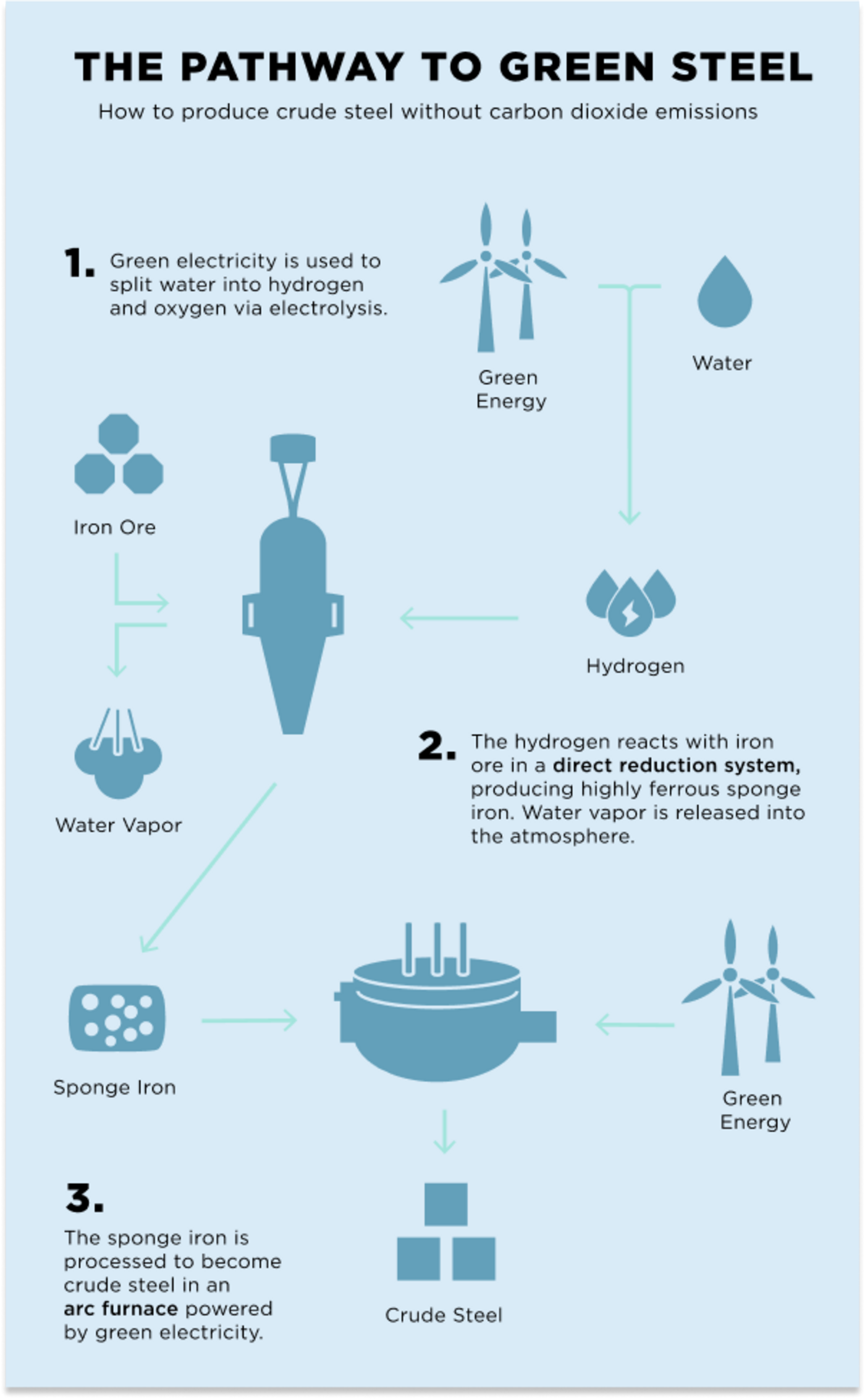HOW GREEN STEEL CAN HELP THE WORLD REACH CLIMATE GOALS

The production of steel is problematic because iron ore must first be heated in blast furnaces, requiring enormous amounts of energy, to produce pure iron, the basic material needed to produce steel. Chemical reactions in the blast furnaces release carbon dioxide, which is harmful to the environment.
Global climate targets require companies to radically rethink their processes. Zero emissions are the ambitious goal. One possible path to achieve this: using hydrogen to create green steel. Using hydrogen helps solve the emissions problem by preventing such emissions in the first place. Hydrogen can be produced with renewable energy and emits no greenhouse gases when burned. The oxygen contained in the iron ore reacts with hydrogen to create water instead of carbon dioxide.

"The oxygen contained in the iron ore reacts with hydrogen to create water instead of carbon dioxide."
At Salzgitter, one of Europe’s largest steel producers, the future has already begun. For the past three years, the company has been producing hydrogen in a high-temperature electrolyzer. With an input of 720 kilowatts, it’s currently the world’s most powerful steam electrolysis plant. The aim of the electrolyzer is to produce as much hydrogen as possible using as little green energy as possible, keeping costs, and environmental impact, to a minimum.

TÜV SÜD has also contributed to this success. Using what is known as the VERIsteel procedure, TÜV SÜD was able to objectively measure reductions in carbon dioxide emissions. The result: by switching to hydrogen, carbon dioxide emissions were reduced by a good 75 percent.